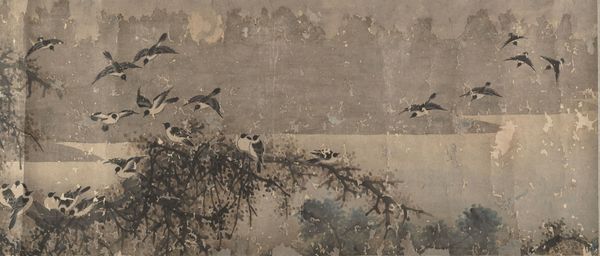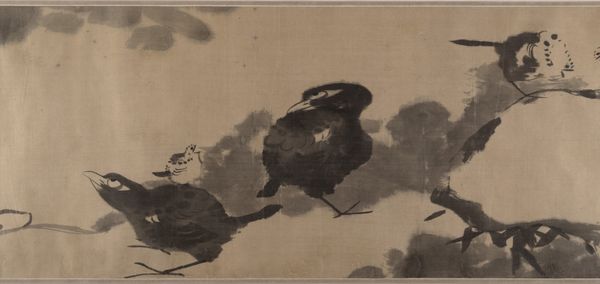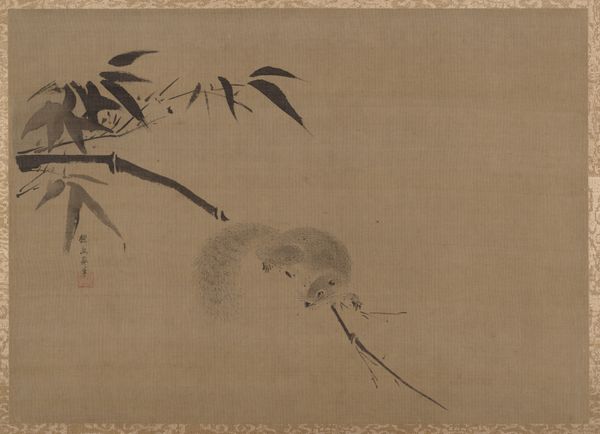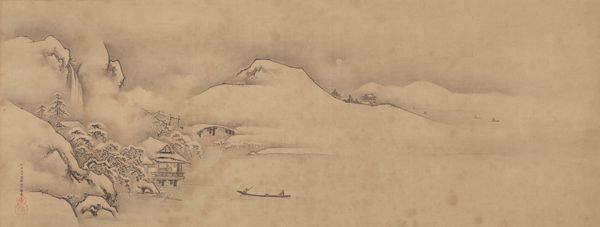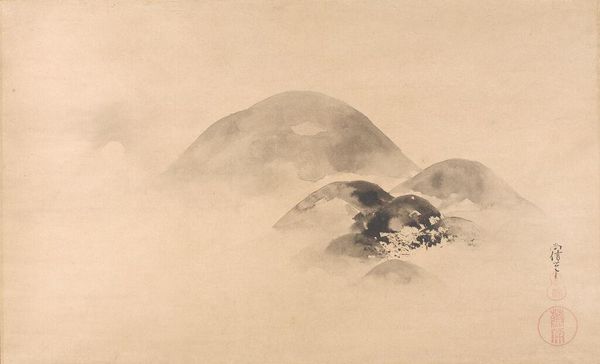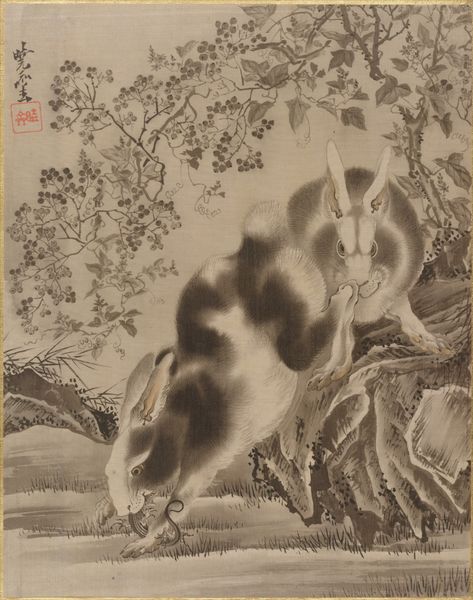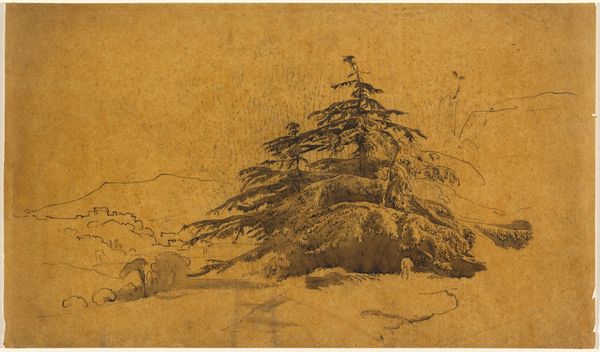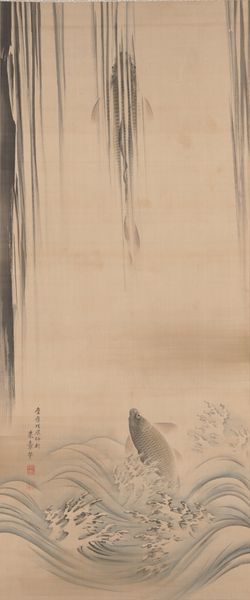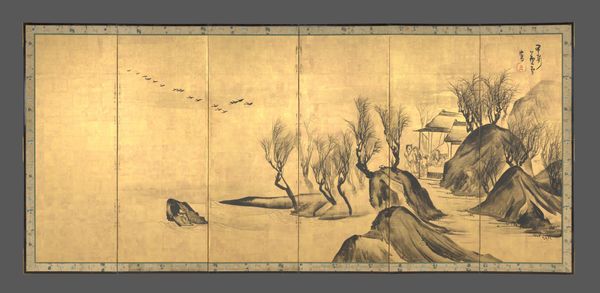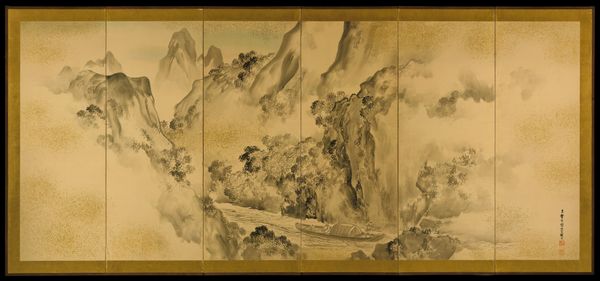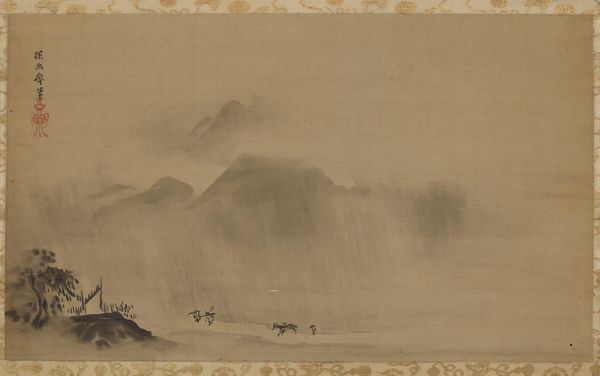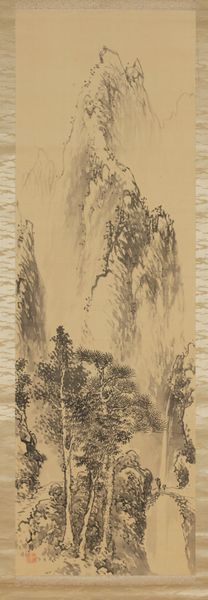
Famous Themes for Painting Study Known as “The Garden of Painting” (Gaen) 1600 - 1670
0:00
0:00
paper, ink
#
ink painting
#
asian-art
#
landscape
#
paper
#
ink
Dimensions: 10 7/8 in. x 10 ft. 7 5/8 in. (27.6 x 324.2 cm)
Copyright: Public Domain
Kano Tan'yū created this ink on paper painting, “The Garden of Painting,” in seventeenth-century Japan. This work exemplifies the synthesis of styles favored by the Kano school, a dominant force in Japanese painting for centuries. The misty landscape, rendered with delicate brushstrokes, evokes classical Chinese landscape painting. However, Tan'yū was equally influenced by native Japanese traditions. The Kano school was patronized by the ruling shogunate, and its artists were tasked with creating a unified artistic language that legitimized their power. “The Garden of Painting” is not just a serene landscape; it embodies the cultural and political ambitions of its time. The painting implies a canon, an institution, and a method. To understand this work fully, we need to explore the historical context of the Kano school through archival sources, and gain insight into the complex relationship between art, power, and cultural identity in Edo-period Japan.
Comments
No comments
Be the first to comment and join the conversation on the ultimate creative platform.
